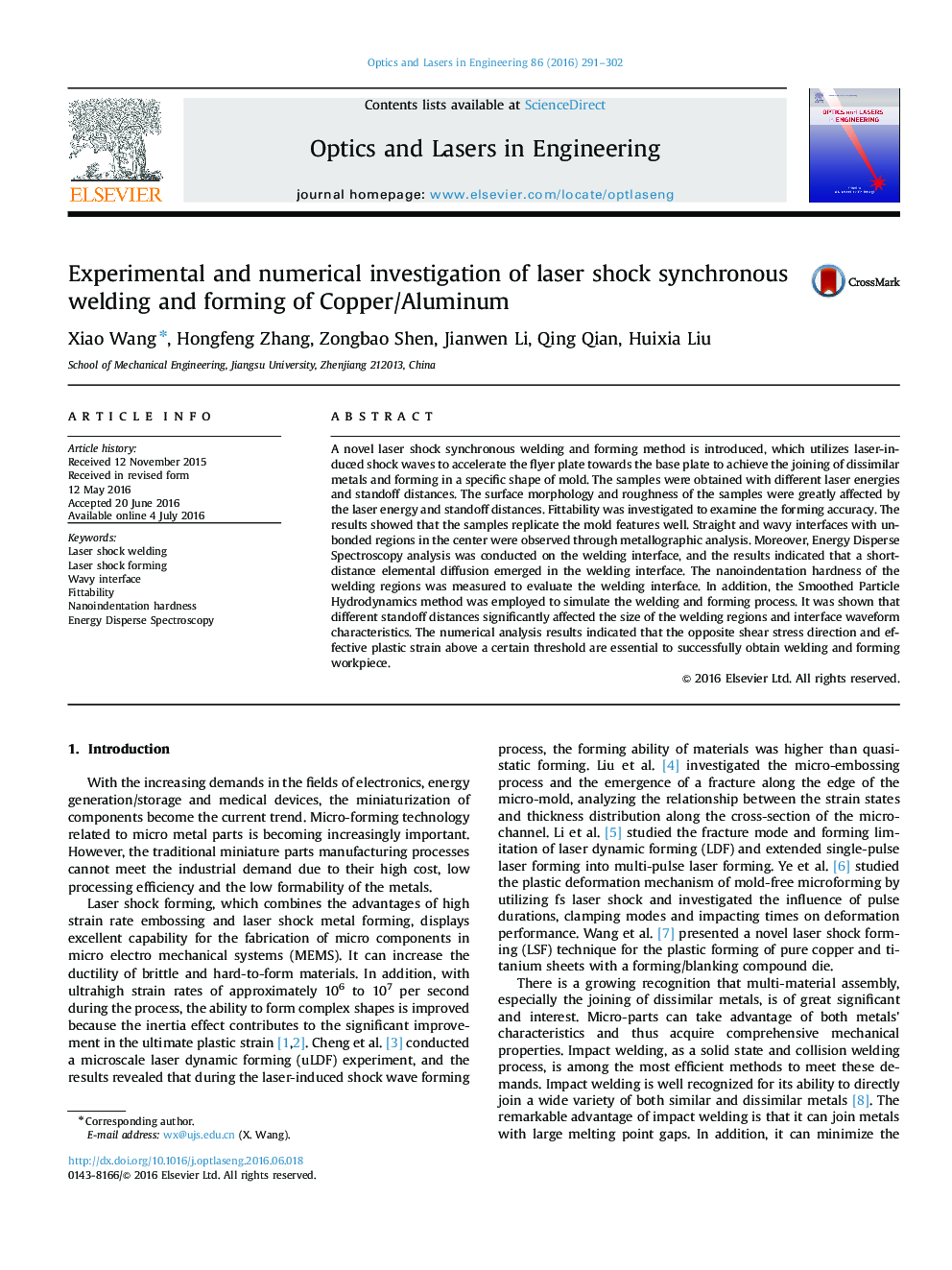| Article ID | Journal | Published Year | Pages | File Type |
|---|---|---|---|---|
| 735010 | Optics and Lasers in Engineering | 2016 | 12 Pages |
•The laser synchronous welding and forming method can complete welding process and forming process of dissimilar metal materials in a single procedure.•The surface roughness under different laser energy and standoff distances were measured to evaluate the quality of the samples.•The Energy Disperse Spectroscopy was conducted in the welding interface to estimate the states of element diffusion.•The shear stress distribution and effective plastic strain in bonded region and unbonded region were analyzed to predict whether the welding process is took place or not.
A novel laser shock synchronous welding and forming method is introduced, which utilizes laser-induced shock waves to accelerate the flyer plate towards the base plate to achieve the joining of dissimilar metals and forming in a specific shape of mold. The samples were obtained with different laser energies and standoff distances. The surface morphology and roughness of the samples were greatly affected by the laser energy and standoff distances. Fittability was investigated to examine the forming accuracy. The results showed that the samples replicate the mold features well. Straight and wavy interfaces with un-bonded regions in the center were observed through metallographic analysis. Moreover, Energy Disperse Spectroscopy analysis was conducted on the welding interface, and the results indicated that a short-distance elemental diffusion emerged in the welding interface. The nanoindentation hardness of the welding regions was measured to evaluate the welding interface. In addition, the Smoothed Particle Hydrodynamics method was employed to simulate the welding and forming process. It was shown that different standoff distances significantly affected the size of the welding regions and interface waveform characteristics. The numerical analysis results indicated that the opposite shear stress direction and effective plastic strain above a certain threshold are essential to successfully obtain welding and forming workpiece.
